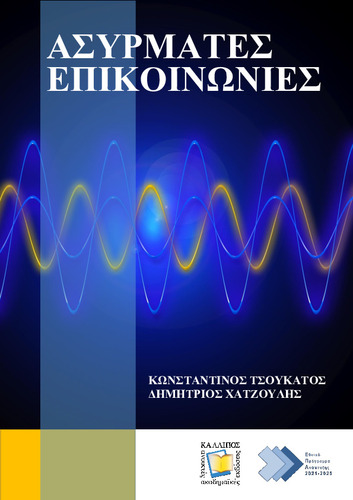| Title Details: | |
|
Wireless Communications |
|
| Authors: |
Tsoukatos, Konstantinos Chatzoulis, Dimitrios |
| Subject: | MATHEMATICS AND COMPUTER SCIENCE > COMPUTER SCIENCE > NETWORKING AND COMMUNICATIONS ENGINEERING AND TECHNOLOGY > TECHNOLOGICAL SCIENCES AND ENGINEERING > TELECOMMUNICATIONS ENGINEERING AND TECHNOLOGY |
| Keywords: |
Wireless Networks
Wireless Communications Telecommunication Systems Mobile Communications Antennas Microstrip Antennas Linear Arrays Propagation Mechanisms Channel Modulation Channel Demodulation Channel Coding Channel Decoding Channel Equalization Time Division Multiple Access Frequency Division Multiple Access Direct Sequence Spread Spectrum Frequency Hopping Spread Spectrum Code Division Multiple Access Orthogonal Frequency Division Multiplexing Orthogonal Frequency Division Multiple Access Single-User Multiple Input – Multiple Output Systems Multiple User Multiple Input – Multiple Output Systems Massive User Multiple Input – Multiple Output Systems Diversity |
| Description: | |
| Abstract: |
This undergraduate textbook is intended for one semester courses in wireless communications, both in undergraduate programs of Engineering and Informatics Schools, as well as for postgraduate programs of schools that want to integrate a course on wireless communications in their curriculum. The aim of the textbook is to provide the reader with the theoretical background of the basic concepts of wireless communications, emphasizing the technological developments of today and tomorrow. Initially, in chapter 1, a valuation of the various wireless technologies and models is made, emphasizing those that dominate today and will concern us in the future. Subsequently, in chapter 2, the antenna operating principles and characteristics are analyzed, and the operation of microstrip and linear antennas is explained in detail. Chapter 3 gives the theoretical background of the statistical description of the wireless medium. Chapters 4 and 5 present signal modulation and demodulation schemes, and chapter 6 describes channel coding and decoding techniques, emphasizing those used in 4G and 5 G. Chapter 7 analyzes channel equalization techniques. Chapters 8, 9 and 10 present the basic techniques and parameters of multiple-access systems. More specifically, chapter 8 describes the TDMA, FDMA and Packet Radio methods, in chapter 9 spread spectrum systems are analyzed, with CDMA as the main representative, and chapter 10 presents the basic principles of the OFDM implementation.
Finally, chapters 11 and 12 introduce the reader to the Multi-Input Multi-Output systems (ΜΙΜΟ) that dominate 4G and 5G. More precisely, chapter 11 analyzes the Single-User Multi-Input Multi-Output systems (SU-MIMO) and chapter 12 analyzes Multiple-User MIMO systems (MU-MIMO), as well as massive MIMO and mmWave massive MIMO that have been introduced in 5G NR.
|
| Linguistic Editors: |
Chatzigeorgiou, Athina |
| Graphic Editors: |
Stavrianou, Irene |
| Type: |
Undergraduate textbook |
| Creation Date: | 17-04-2023 |
| Item Details: | |
| ISBN |
978-618-5726-33-1 |
| License: |
Attribution - NonCommercial - ShareAlike 4.0 International (CC BY-NC-SA 4.0) |
| DOI | http://dx.doi.org/10.57713/kallipos-202 |
| Handle | http://hdl.handle.net/11419/9347 |
| Bibliographic Reference: | Tsoukatos, K., & Chatzoulis, D. (2023). Wireless Communications [Undergraduate textbook]. Kallipos, Open Academic Editions. https://dx.doi.org/10.57713/kallipos-202 |
| Language: |
Greek |
| Consists of: |
1. Wireless networks technologies and standards 2. Electromagnetic wave propagation and antennas 3. Statistical description of the wireless channel 4. Digital modulation 5. Digital demodulation 6. Channel coding and decoding 7. Channel equalization 8. Multiple access systems 9. Spread spectrum systems 10. Orthogonal frequency division multiplexing 11. Single-user MIMO systems 12. Multiple-user MIMO systems |
| Number of pages |
408 |
| Publication Origin: |
Kallipos, Open Academic Editions |
| You can also view | |
| User comments | |
There are no published comments available! | |

